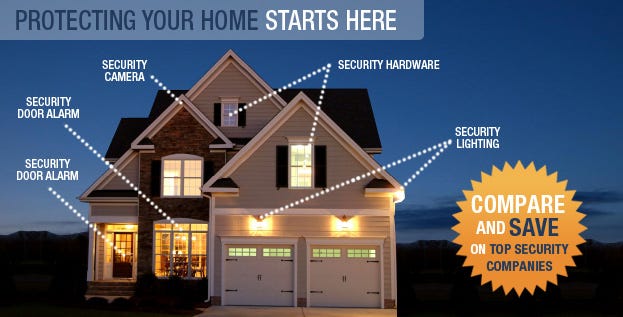Top Security Equipment Suppliers for Advanced Custom Security Solutions
Exploring the Function of Accessibility Control Systems in Enhancing Protection Equipment Efficiency and Performance
Access control systems are progressively acknowledged as crucial elements in the landscape of protection management, offering a structured technique to manage access to delicate locations and information. Their ability to integrate with different safety technologies, such as monitoring electronic cameras and security system, considerably improves the general efficiency and efficiency of protection operations. As organizations navigate the complexities of application and administration, different difficulties occur that warrant consideration. What implications do these challenges hold for the future of security protocols and technologies?
Recognizing Accessibility Control Solution
Accessibility control systems play an essential function in guaranteeing the protection of various settings, from business workplaces to sensitive federal government facilities. These systems manage that can go into or exit a marked area, consequently safeguarding properties and delicate information. The basic elements of gain access to control systems consist of authorization, authentication, and recognition procedures.
Identification entails validating an individual's identification, commonly via credentials such as key cards, biometric information, or passwords. Once recognized, verification validates the individual's right to accessibility, frequently with multi-factor verification methods to enhance security. Consent determines the level of accessibility granted, enabling for set apart permissions based on roles within the organization.
Accessibility control systems can be categorized into two main types: rational and physical. Physical access control concern substantial areas, while sensible accessibility control regulates electronic details systems. Both types work synergistically to offer extensive safety and security options.
Combination With Safety And Security Technologies
The integration of accessibility control systems with various other safety and security technologies is essential for producing an alternative security setting. By integrating access control with video clip monitoring, breach detection, and alarm systems, companies can enhance their general safety position. This interconnected framework enables for real-time monitoring and fast response to protection events, boosting situational understanding and operational performance.
For example, incorporating access control with video clip surveillance makes it possible for protection workers to validate access occasions visually, making sure that just authorized people are granted entrance. Similarly, when gain access to control systems are connected to security system, any type of unapproved access attempts can cause immediate notifies, motivating swift action.
In addition, the integration of gain access to control with cybersecurity procedures is increasingly crucial in shielding sensitive data and physical assets. By aligning physical safety and security procedures with IT safety systems, companies can make certain that both electronic and physical access factors are kept an eye on and regulated efficiently.
Advantages of Boosted Security Workflow

In addition, boosted security operations facilitate real-time tracking and event response. With incorporated systems that include surveillance electronic cameras, alarm systems, and gain access to controls, safety and security teams can swiftly determine and address possible threats. This aggressive technique allows for prompt interventions, reducing the chance of safety breaches and potential losses.
In addition, effective security operations add to a culture of safety within the organization. Staff members are likely to really feel more safe and secure when they understand that durable steps remain in area, causing increased morale and performance. The usage of data analytics from accessibility control systems enables organizations to analyze security patterns, improve plans, and allot resources successfully.
Obstacles and Considerations

Furthermore, organizations should attend to the possibility for information violations. Accessibility control systems often handle sensitive details, and any vulnerabilities could expose this information to unapproved accessibility. access control manufacturers. Guaranteeing robust cybersecurity actions is important to safeguard against such risks
User training is an additional essential factor to consider. Staff members have to understand exactly how to make use of accessibility control systems properly, as inappropriate usage can result in security gaps. Companies should balance protection with individual convenience; extremely restrictive accessibility can prevent efficiency and lead to workarounds that compromise protection procedures.
Conformity with regulative and legal requirements is additionally vital. Organizations needs to guarantee that their accessibility control systems satisfy sector requirements and local regulations, which can differ significantly. The custom security solutions recurring maintenance and administration of these systems call for devoted sources, making it crucial for organizations to designate appropriate spending plans and employees to guarantee lasting effectiveness and efficiency.

Future Fads in Access Control
Expecting the future of accessibility control reveals a landscape progressively formed by technical advancements and developing security requirements. One substantial fad is the integration of synthetic knowledge (AI) and artificial intelligence, which enhance decision-making capabilities and automate risk discovery. These modern technologies enable real-time analysis of access patterns, enabling more adaptive and responsive safety and security steps.
Biometric verification is additionally obtaining grip, with innovations in finger print, face acknowledgment, and iris scanning innovations supplying enhanced safety and security and user benefit. As these systems end up being much more budget friendly and sophisticated, their adoption across various markets is anticipated to increase.
Another emerging fad is the change towards cloud-based access control systems. These solutions provide scalability, remote monitoring, and central data storage, permitting organizations to improve operations and boost performance.
Furthermore, the Internet of Points (IoT) is readied to revolutionize gain access to control by making it possible for interconnected devices to interact and share information, thereby enhancing situational recognition and safety responsiveness.
Final Thought
In conclusion, accessibility control systems considerably boost the efficiency and efficiency of protection devices by facilitating exact identification, verification, and authorization procedures (custom security solutions). Their integration with security and security system promotes a proactive safety setting that deals with possible breaches in real-time. While challenges and considerations exist, the continuous advancement of gain access to control modern technologies assures to additional boost safety and security operations. Inevitably, these systems are integral to securing delicate locations and details within companies, ensuring a durable protection structure.
Access control systems are increasingly recognized as crucial components in the landscape of security management, providing a structured strategy to manage accessibility to delicate locations and info. Physical gain access to control pertains to concrete places, while logical access control governs electronic details systems.The combination of gain access to control systems with other security modern technologies is crucial for developing an alternative safety and security environment. Access control systems usually take care of delicate information, and any kind of susceptabilities can subject this data to unapproved gain access to. Organizations have to stabilize safety and security with user comfort; excessively restrictive accessibility can impede productivity and lead to workarounds that endanger safety and security protocols.